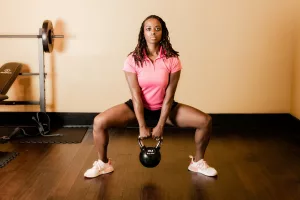Rowing is often associated with serene waters, rhythmic motions, and a unique blend of strength and endurance. However, its benefits go far beyond the surface. Whether done on the water or using a rowing machine, this full-body exercise offers remarkable advantages for general health, encompassing physical, mental, and emotional well-being. Rowing is a low-impact yet high-intensity activity that improves cardiovascular health, strengthens muscles, and promotes mental clarity. In this article, we will explore 20 amazing benefits of rowing, highlighting why it deserves a central place in your fitness routine.
1. Enhances Cardiovascular Health
Rowing is an excellent form of aerobic exercise, engaging both the upper and lower body while elevating the heart rate. This sustained effort strengthens the heart, improves blood circulation, and enhances oxygen delivery to the body’s tissues. Regular rowing workouts can help lower blood pressure, reduce LDL cholesterol levels, and increase HDL cholesterol, significantly reducing the risk of heart disease.
Unlike other forms of cardio, rowing uniquely combines strength and endurance, challenging the cardiovascular system without the high impact of running. This makes it a safer alternative for those with joint issues or who prefer low-impact activities. Additionally, the rhythmic nature of rowing promotes steady breathing, which improves overall heart efficiency over time.
2. Provides a Full-Body Workout
Rowing is a comprehensive exercise, engaging up to 86% of the body’s muscles. Unlike activities that focus on isolated muscle groups, rowing simultaneously works the arms, shoulders, back, core, glutes, and legs. This coordinated effort improves muscle strength and endurance while promoting balanced muscle development.
The rowing stroke consists of four phases—catch, drive, finish, and recovery—all of which require seamless coordination between different muscle groups. For example, the legs generate power during the drive phase, the core stabilizes the body, and the arms complete the stroke. Over time, this full-body engagement enhances functional strength, making everyday activities like lifting, bending, and walking easier.
3. Burns Calories Effectively
Rowing is a calorie-burning powerhouse, combining cardio and strength training into one efficient workout. Depending on the intensity and duration, rowing can burn between 400 and 600 calories per hour, making it an effective tool for weight management. High-intensity intervals on a rowing machine can further boost calorie burn by increasing the afterburn effect, where the body continues to burn calories post-exercise.
Unlike other calorie-burning exercises, rowing engages multiple muscle groups, leading to higher energy expenditure. This makes it ideal for those looking to shed weight while building lean muscle mass. Additionally, the versatility of rowing machines allows users to customize their workouts to target specific fitness goals, whether it’s fat loss, endurance, or strength.
4. Improves Posture and Core Strength
In today’s sedentary world, poor posture is a common problem that leads to back pain and reduced mobility. Rowing is an effective solution for improving posture and strengthening the core muscles, which are essential for spinal alignment and stability. The repetitive pulling motion reinforces the muscles in the back, shoulders, and abdomen, helping to counteract the effects of prolonged sitting.
Rowing emphasizes proper form, requiring a straight back and engaged core throughout the workout. This focus on alignment naturally trains the body to maintain better posture in daily life. Over time, rowing can alleviate back pain, reduce the risk of injuries, and improve overall body mechanics.
5. Builds Cardiovascular Endurance
Endurance is a critical component of fitness, and rowing is one of the best exercises for building cardiovascular stamina. The continuous, rhythmic nature of rowing challenges the heart and lungs to supply oxygen efficiently to the working muscles. Over time, this improves the body’s ability to sustain physical activity for longer periods without fatigue.
Regular rowing sessions condition the cardiovascular system to work more efficiently, enhancing oxygen uptake and utilization. This increased stamina translates to better performance in other physical activities and an overall boost in energy levels. Whether you’re climbing stairs, cycling, or playing a sport, the endurance developed through rowing enhances your overall physical capabilities.
6. Promotes Joint Health
Unlike high-impact exercises like running, rowing is a low-impact activity that’s gentle on the joints. The smooth, gliding motion of rowing minimizes stress on the knees, hips, and ankles while still providing a vigorous workout. This makes rowing an excellent option for individuals with arthritis, joint pain, or those recovering from injuries.
The controlled range of motion in rowing also improves joint flexibility and reduces stiffness. Regular rowing helps lubricate the joints, enhancing mobility and reducing the risk of injury. It’s particularly beneficial for older adults or anyone looking to maintain joint health without the risk of wear and tear.
7. Strengthens the Upper Body
Rowing is an exceptional upper-body workout, targeting the arms, shoulders, and back muscles. The pulling motion works the biceps, triceps, and forearms while engaging the trapezius and rhomboid muscles in the upper back. Over time, this builds upper-body strength, improving overall physical performance and aesthetic appearance.
The strengthening of the back muscles also helps counteract the rounded shoulders and hunched posture that result from long hours of desk work. This increased upper-body strength translates to practical benefits, such as improved ability to lift objects, carry groceries, or perform daily tasks with ease.
8. Tones the Lower Body
While rowing is often associated with upper-body strength, it’s equally effective for toning the lower body. The drive phase of the rowing stroke relies heavily on the legs, engaging the quadriceps, hamstrings, and glutes. This consistent activation of the lower body helps build strength, endurance, and muscle definition.
Rowing is particularly effective at targeting the glutes, one of the largest muscle groups in the body. Strong glutes are essential for maintaining proper posture, balance, and lower-body mobility. Additionally, the engagement of the calves and ankles during rowing enhances stability and coordination, making it a comprehensive lower-body workout.
9. Boosts Mental Health
Exercise is a powerful tool for improving mental health, and rowing is no exception. The rhythmic and meditative nature of rowing promotes a sense of calm and focus, reducing stress and anxiety. The release of endorphins during rowing workouts enhances mood and provides a natural boost to mental well-being.
Rowing can also be a social activity, whether done in a group on the water or in a fitness class. This sense of community and teamwork fosters connection and reduces feelings of isolation. For those rowing solo, the repetitive motion and focus required can create a meditative state, helping to clear the mind and improve mental clarity.
10. Increases Lung Capacity
Rowing is a powerful exercise for improving respiratory health and increasing lung capacity. The continuous, dynamic nature of rowing requires controlled breathing to match the rhythm of the strokes, which strengthens the respiratory muscles and enhances lung efficiency. Over time, this improved respiratory function translates to better oxygen delivery during both exercise and daily activities.
Enhanced lung capacity benefits individuals with respiratory conditions, such as asthma, by improving their ability to perform physical tasks without becoming winded. Additionally, the focus on breathing during rowing can improve mindfulness and relaxation, further supporting overall health and well-being.
11. Supports Weight Loss and Body Composition
Rowing is one of the most efficient exercises for weight loss and improving body composition. It combines cardio and strength training, enabling the body to burn calories while building lean muscle. This dual effect is ideal for achieving a toned and fit physique, as muscle burns more calories at rest than fat. Regular rowing workouts can accelerate metabolism, making it easier to maintain a healthy weight over time.
Another advantage of rowing is its scalability. Whether you are a beginner trying to lose weight or an advanced athlete refining your physique, rowing can be adjusted to match your fitness level. High-intensity intervals can maximize fat burn, while steady-state rowing can improve endurance and support sustainable weight management. This adaptability makes rowing a versatile and inclusive exercise for everyone.
12. Improves Coordination and Balance
Rowing requires precise coordination between the upper and lower body, making it an excellent exercise for improving motor skills and balance. The stroke sequence—catch, drive, finish, and recovery—demands synchronized movements, which train the brain and body to work harmoniously. This improved coordination benefits daily activities and reduces the risk of falls, especially in older adults.
Balance is further enhanced through the engagement of stabilizing muscles, particularly the core, which provides a strong foundation for movement. The controlled nature of rowing helps develop proprioception, or the body’s awareness of its position in space. This heightened sense of balance and coordination translates to better performance in sports and daily tasks, such as walking on uneven surfaces or carrying heavy objects.
13. Reduces Stress Levels
Few exercises offer the same combination of stress relief and physical engagement as rowing. The repetitive, rhythmic motion of rowing creates a meditative effect that calms the mind and reduces cortisol levels, the hormone associated with stress. Additionally, rowing releases endorphins, the body’s natural mood boosters, which promote a sense of well-being and relaxation.
Rowing can also serve as a form of active meditation, where the focus on breathing and form helps quiet racing thoughts. Whether rowing outdoors on a tranquil lake or on a rowing machine in a controlled environment, the experience can provide a mental escape, allowing individuals to recharge and refocus. Over time, regular rowing can contribute to better emotional resilience and improved mental health.
14. Enhances Flexibility and Mobility
Rowing involves a wide range of motion, which enhances flexibility and joint mobility. During each stroke, the body moves from a compressed position at the catch to a fully extended position at the finish, stretching the muscles and promoting joint health. This dynamic movement keeps the body limber, reducing stiffness and increasing overall flexibility.
Regular rowing also strengthens the muscles that support joint movement, such as the hips, knees, and shoulders, further enhancing mobility. Improved flexibility and mobility reduce the risk of injuries and make it easier to perform everyday tasks, such as bending, reaching, or climbing stairs. For older adults, maintaining mobility is key to preserving independence and quality of life.
15. Provides Low-Impact Rehabilitation
Rowing is often recommended for individuals recovering from injuries or managing chronic conditions due to its low-impact nature. Unlike running or high-intensity weightlifting, rowing minimizes stress on the joints while still providing a challenging workout. This makes it an ideal option for people with arthritis, joint pain, or those undergoing physical therapy.
The adjustable resistance of rowing machines allows users to control the intensity of their workouts, making it easy to tailor the exercise to their needs. This flexibility is particularly valuable for individuals rebuilding strength or endurance after surgery or injury. By engaging multiple muscle groups in a controlled manner, rowing supports rehabilitation while reducing the risk of re-injury.
16. Improves Sleep Quality
Exercise is well-known for promoting better sleep, and rowing is particularly effective due to its combination of physical exertion and mental relaxation. A vigorous rowing session helps expend energy, making it easier to fall asleep at night. The endorphins released during exercise also contribute to a positive mood, which can reduce stress-related sleep disturbances.
Additionally, the meditative aspect of rowing, especially when done in a quiet environment, promotes mental calmness, preparing the body for restful sleep. Regular rowing routines can help regulate circadian rhythms, ensuring consistent and high-quality sleep. For those struggling with insomnia or disrupted sleep patterns, incorporating rowing into their daily routine can be a natural and effective remedy.
17. Boosts Immune Function
Rowing can have a positive impact on the immune system, making it a valuable addition to a healthy lifestyle. Moderate-intensity exercise like rowing stimulates the production of immune cells, such as natural killer cells and white blood cells, which help the body fight off infections. Additionally, the anti-inflammatory effects of regular physical activity contribute to a stronger immune response.
The stress-reducing benefits of rowing also play a role in boosting immunity. Chronic stress weakens the immune system, but the calming and mood-enhancing effects of rowing help mitigate this impact. Over time, individuals who engage in regular rowing workouts are better equipped to ward off illnesses and recover more quickly when they do fall sick.
18. Enhances Longevity
Rowing is an investment in long-term health and longevity, offering benefits that extend well beyond immediate fitness goals. By improving cardiovascular health, strengthening muscles, and reducing the risk of chronic diseases, rowing supports a longer, healthier life. Research has consistently shown that regular physical activity is one of the most important factors in promoting longevity, and rowing is an ideal form of exercise to meet these needs.
Additionally, rowing’s low-impact nature makes it a sustainable activity that individuals can continue well into their later years. Its adaptability ensures that people of all fitness levels can reap the benefits, from improving mobility in older adults to maintaining peak performance in younger athletes. The holistic benefits of rowing—spanning physical, mental, and emotional health—make it a cornerstone of a long and fulfilling life.
19. Improves Focus and Cognitive Function
Physical activity is closely tied to improved brain health, and rowing is no exception. The coordination required for rowing engages multiple areas of the brain, improving focus and cognitive function over time. The repetitive, rhythmic nature of the exercise also enhances concentration, as it requires sustained attention to maintain proper form and timing.
Additionally, rowing increases blood flow to the brain, delivering oxygen and nutrients that support cognitive function. Regular exercise has been linked to a reduced risk of neurodegenerative diseases like Alzheimer’s and dementia, making rowing a valuable tool for preserving mental acuity. Whether you’re aiming to boost productivity or maintain cognitive health as you age, rowing offers significant mental benefits.
20. Encourages Consistency and Discipline
Rowing is not just a workout—it’s a habit that fosters consistency and discipline. The structured nature of rowing workouts, with their clear stroke sequences and measurable goals, encourages a routine that is easy to stick to. Whether you’re tracking distance, time, or calories burned, rowing provides tangible feedback that motivates progress.
For many, rowing becomes a meditative ritual, offering a sense of accomplishment and mental clarity. This sense of routine extends beyond fitness, cultivating discipline that can be applied to other areas of life, such as work, relationships, or personal growth. By committing to regular rowing, individuals develop not only physical strength but also the mental resilience needed to achieve their broader goals.
Conclusion
Rowing is more than just a physical activity—it’s a holistic exercise that enhances every aspect of health and well-being. From improving cardiovascular fitness and building strength to reducing stress and boosting mental clarity, rowing offers unparalleled benefits for both the body and mind. Its versatility, low-impact nature, and adaptability make it accessible to people of all ages and fitness levels. Whether you’re seeking weight loss, rehabilitation, or overall health improvement, rowing provides a complete and rewarding solution. By making rowing a regular part of your fitness routine, you can unlock its incredible potential and enjoy a healthier, happier life.




